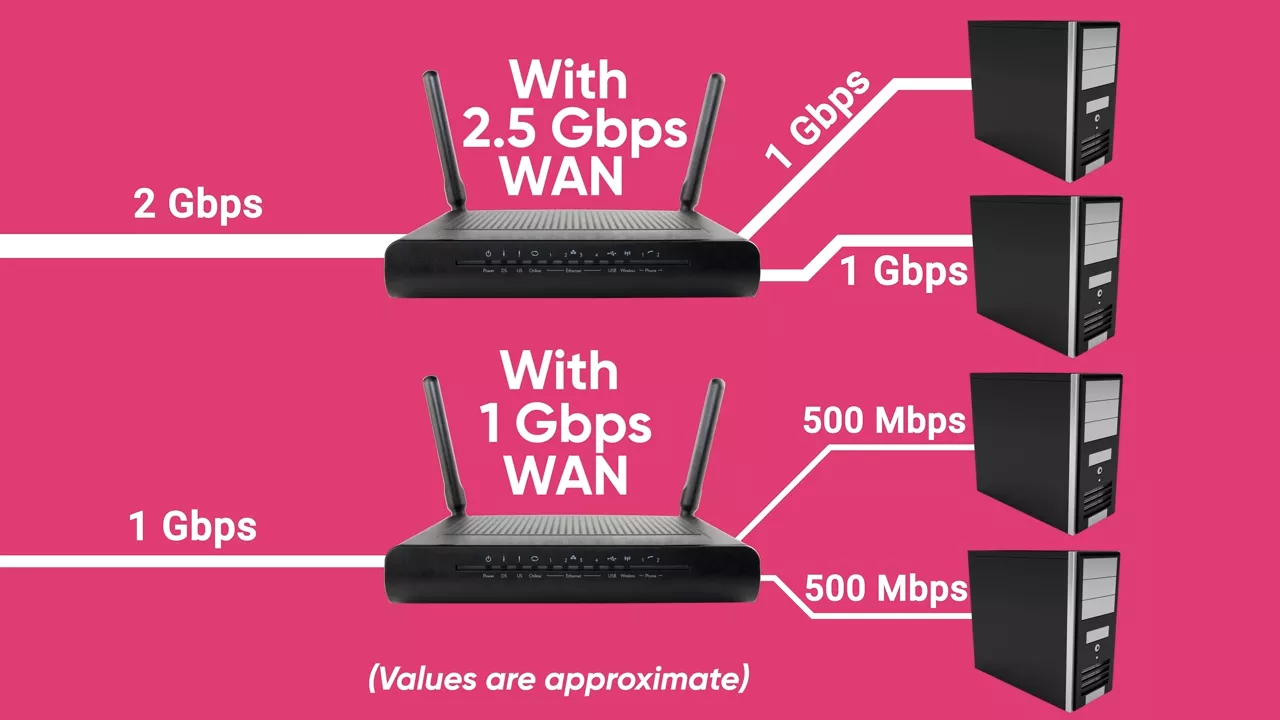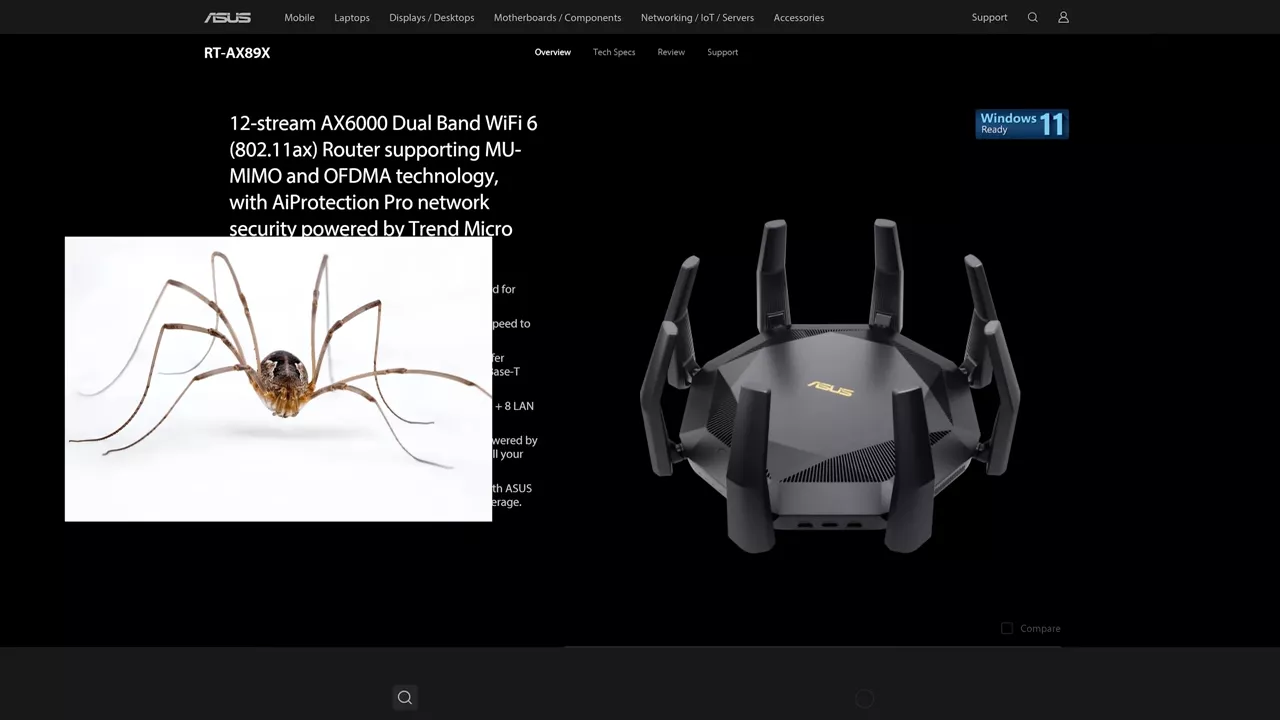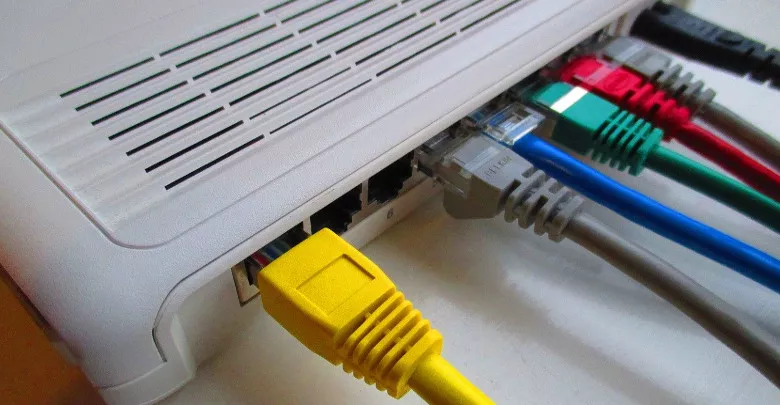You probably haven't had to think too much about what gadget to plug into what port on your home router or network switch. 'Cause they're usually all the same speed. Gigabit on just about everything has been the standard for quite a while now, but it looks like this is changing as we've started to see other speeds, even on consumer level gear, not just enterprise stuff.
What other speeds are we talking about? Well, we did a review a while ago on 2.5 gigabit ethernet, which was developed as a cheaper alternative to the much more pricey 10 gigabit revision. Not only are the actual 2.5 gigabit products like routers and switches and adapters cheaper, but it can run over existing Cat5e cabling. So not redoing all of your cabling. That's a lot cheaper. That's pretty appealing. You don't have to rewire your entire network in order to take advantage of speeds above one gigabit.
But unlike gigabit equipment, which usually just has the same speed on every port, 2.5, five and 10 gigabit devices sometimes use different speeds on different ports. But why?
Well that depends on which gadget you're asking about. For example, 2.5 gigabit routers with only one 2.5 gig port are becoming more common. Typically, that faster port is the WAN port designed to connect your modem or optical network terminal if you have fiber so that you can take advantage of faster internet connections that have recently become available going from the outside world to your router. That's your fast port.
A 2.5 gig router will obviously support a two gigabit connection, the fastest commonly offered in the U.S. these days. And it can even give you a little extra speed on a connection advertised as one gigabit if your ISP allows it. But what's the point of having a 2.5 gigabit port for incoming traffic if all the other outgoing ports are just one gigabit?
Well, it does mean you're not going to be getting two plus gigabits on your client devices, but the faster single WAN port eliminates a bottleneck at the back end. For example, if you have two computers, both trying to download a huge game,  they could each run their downloads at around one gigabit per second, instead of less than half of that if your incoming port was just a one gig port. So the idea here is to allow consumers to take advantage of some of the benefits of 2.5 gigabit without being too expensive, especially considering the vast majority of client devices like TVs and game consoles and typical desktop computers out there right now, they just, they only have one gigabit, but what if your computer isn't typical? What if you've cut it out with a shiny new 2.5 gig adapter card? Can you go faster?
they could each run their downloads at around one gigabit per second, instead of less than half of that if your incoming port was just a one gig port. So the idea here is to allow consumers to take advantage of some of the benefits of 2.5 gigabit without being too expensive, especially considering the vast majority of client devices like TVs and game consoles and typical desktop computers out there right now, they just, they only have one gigabit, but what if your computer isn't typical? What if you've cut it out with a shiny new 2.5 gig adapter card? Can you go faster?
Well, yes if you have the right equipment, if you want to pass that 2.5 gig speed from your router to your other devices, it's pretty easy to buy 2.5 gigabit network switches these days. And unlike routers, these tend to have all the ports running the same speed. Not only are these useful for connecting any new 2.5 gig computers you might have, but they can help you if you run a home media server. Multiple computers trying to access high resolution videos can do so without backend bottle-necking. Similar to the example we gave earlier about sharing an internet connection.
But remember that to connect everything together seamlessly and still have high speed back haul, you will typically need a second higher speed Ethernet port on your router for your fancy 2.5 gigabit switch. It's 2.5 to the outside world's internet. And then another 2.5 to the switch. And although these 2.5 gig switches are significantly more expensive than gigabit only options, they're still way less money than the faster 10 gig models, which often have just one or two 10 gig ports to again, keep costs down.
These are designed more for enterprise settings where you need a really high speed backbone for your network. Though at the time, there are actually a couple of 10 gigabit home routers on the market with two supported ports each. One of which features a design that looks uncomfortably like a daddy long legs.  So bottom line, a router with a 2.5 gig WAN port could be useful if you have really fast internet and have multiple folks using lots of bandwidth, but the fancier stuff is probably more in the realm of the home media server crowd, offices, or other niche use cases like having a whole den of video editors on your staff, but who in the world would have that?
So bottom line, a router with a 2.5 gig WAN port could be useful if you have really fast internet and have multiple folks using lots of bandwidth, but the fancier stuff is probably more in the realm of the home media server crowd, offices, or other niche use cases like having a whole den of video editors on your staff, but who in the world would have that?


No comments yet